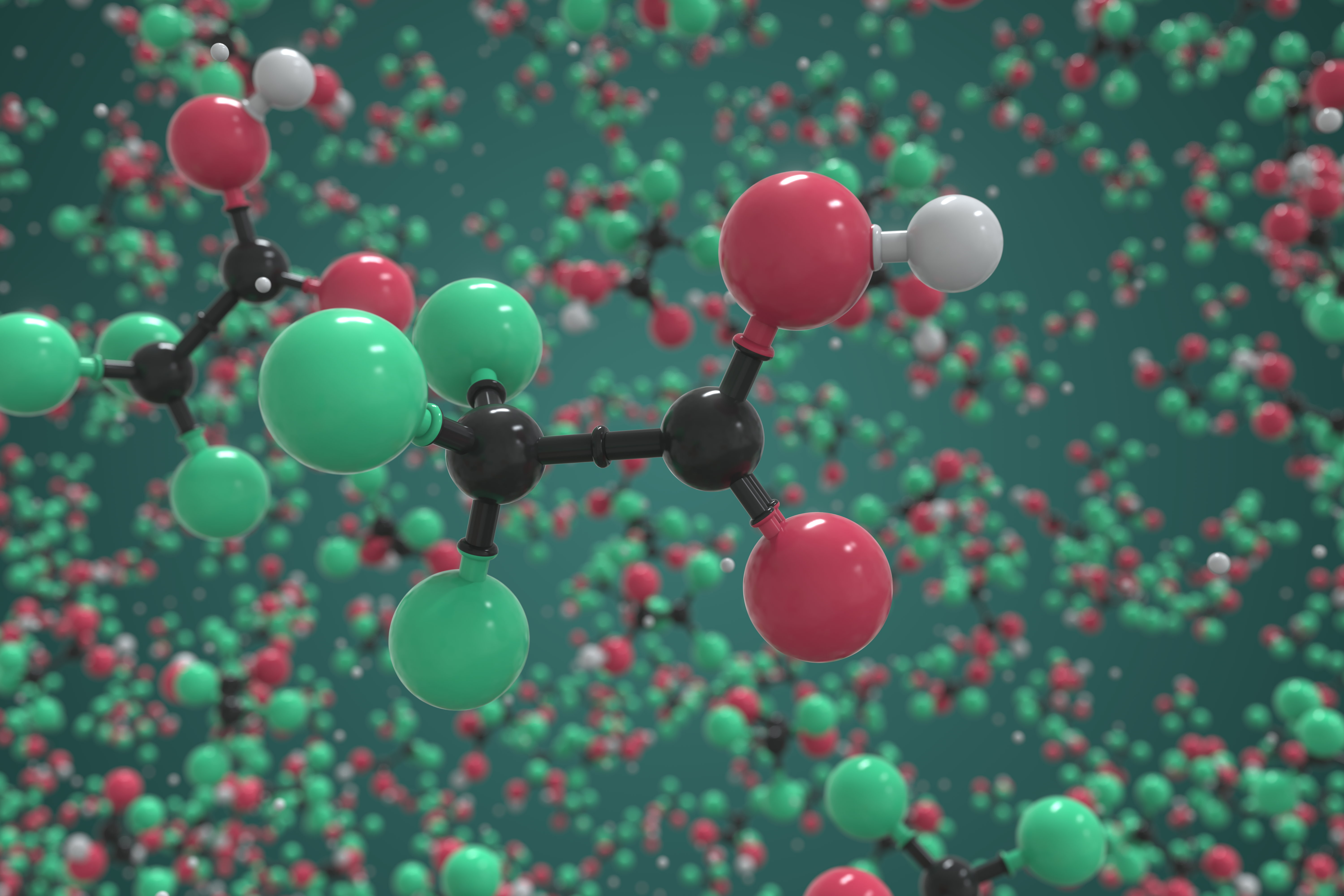INTRODUCTION
Trifluoroacetic acid (TFA), is widely used in organic synthesis as a solvent, catalyst and reagent thanks to its reactivity and stability under adverse conditions.
It is considered one of the most economical fluorinated building blocks. It is widely used in peptide synthesis and other organic transformations involving deprotection of t-BOC group.
Manufacture
Trifluoroacetic acid is commonly produced in Simon electro-fluorination process involving hydrogen fluoride and acetic acid.
| Synonyms | Trifluoroethanoic acid Perfluoroacetic acid |
| CAS no. | 76-05-1 |
| EINECS no. | 200-929-3 |
| Molecular formula | C2HF3O2 |
| Molecular weight | 114.02 |
| Structure |  |
General Usage
The acid owes its multiple usages to its low boiling point, high dielectric constant, and relatively stronger acidity. It is generally employed in chemical industry as:
| Solvent in polymerization and oxidation |
| Solvent for chromatography |
| Catalyst in esterification, transesterification, and olefin reduction in petroleum refining |
| Low Boiling Reagent in various reactions |
Niche’ Applications
The chemical processes, that lead to value added products, are centered around the carboxylic group of trifluoroacetic acid and the stability rendered by the trifluoromethyl group. The special applications include:
| Trifluoromethylation – introduction of CF3 group in organic molecules thereby creating CF3 building blocks |
| Hydroacylation of complex organic molecules |
| Acylation of aromatics to form corresponding ketones and a plethora of acyl-containing intermediates |
| Olefin Hydration to produce alcohols – it replaces sulphuric acid, to which olefins are sensitive |
| Deprotection of amino group in some peptide synthesis for its higher solvency and volatility |
| Rearrangement – the acid is a key reagent in converting cyclohexanone oxime to ε-caprolactam |
| Protein Synthesis – where the acid protects the active amine |
Proxime Intermediates
The fluorinated acetic acid, by conventional synthetic processes, is easily converted to next step intermediates, that are vital for pharma and agro industries.
In these processes as well, the active carboxylic group and the stable trifluoromethyl moiety are the factors responsible.
These include:
| Trifluoroacetic anhydride – that further produces Thiazafluron |
| Trifluoroacetic acid ethyl ester (also known as ethyl trifluoroacetate) |
| Trifluoroacetic acid methyl ester |
| Trifluoroacetic acid isopropyl ester |
| 2,2,2-Trifluoroethanol – that is in turn consumed to make isoflurane and polythiazide |
High-End Intermediates
Trifluoroacetic acid finds applications as a key raw material to manufacture number of value-added, high-end intermediates such as:
| Peroxytrifluoroacetic acid |
| 2-(2,2,2-Trifluoroacetylamino)pyridine |
| N[1-{6-Chloro-3-pyridinyl)methyl)-2(1H)-pyridinylidene]-2,2,2, trifluoroacetamide |
| Methyl 2-Fluoroacrylate |
SPECIFICATIONS
| Test | Unit | Specification |
|---|---|---|
| Appearance | – | Clear & colorless liquid |
| Moisture | % w/w | 0.05 max |
| Fluoride | % w/w | 0.005 max |
| Chloride | % w/w | 0.001 max |
| Sulphate | % w/w | 0.001 max |
| Arsenic | ppm | NMT 8.0 |
| Titrimetric Purity | % w/w | 99.9 min |
| Identification by Ion Chromatography | The retention time of TFA matches to that of the standard TFA |
REACH status
TFA offered by ExSyn is registered under EU REACH regulations.
STORAGE
Product is stored at ambient temperature.
ExSyn offers this product on commercial scale and welcomes enquiries. No matter the quantity you need, our exceptional quality and service will make ExSyn your supplier of choice! If you need any additional information or SDS, please get in touch with us.
Iodine is anon-metallic, dark-grey/purple-black, lustrous, solid element. It is the heaviest and the rarest of stable halogens that can be found on the crust of earth.About fifty percent of all iodine produced and manufactured worldwide is used to form Organoiodine compounds. Iodine is an important element for many health-sustaining processes and essential for human thyroid health.
The product, acronymed Oct-NBE, is an organic compound with a cyclic ring system and a 8-membered hydrophobic chain. The structure renders the chemical special properties leading to its applications in diverse fields.
Nicotine is a hygroscopic, colorless to slight yellow, oily liquid, that is readily soluble in alcohol, ether or light petroleum. It is widely used recreationally as a stimulant and anxiolytic.
The product, acronymed ETD, is an organic compound with a fused bicyclic ring system and an ethylidene group. The structure renders the chemical special properties leading to its applications in diverse fields.
Sodium perchlorate monohydrate is the inorganic compound with the chemical formula NaClO4•H2O. It is the common existence form of sodium perchlorate, which can gradually absorb water in the air to form the monohydrate. Sodium perchlorate monohydrate is white rhombic crystal which is highly soluble in water and in alcohol. Its capacity to undergo redox reactions, liberating oxygen atoms, has been harnessed in the preparation of specialty chemicals, including pharmaceutical intermediates and fine chemicals.
Triphenylphosphine is a common organophosphorus compound that is frequently abbreviated as PPh3 or Ph3P. It is widely used in organic and organometallic compound synthesis because it is an effective reducing agent as well as a neutral ligand. At room temperature, PPh3 crystals are relatively air-stable and colourless.
Potassium chlorate holds significant importance across various industries due to its diverse applications. This white crystalline compound has been utilized for centuries as an essential ingredient in the production of matches, fireworks, and explosives, owing to its ability to release oxygen upon decomposition.
Podophyllotoxin is a non-alkaloid toxin lignan extracted from the roots and rhizomes of Podophyllum species. It is an organic heterotetracyclic compound that has a Furonaphthodioxole skeleton bearing a 3,4,5-trimethoxyphenyl substituent.
Octadecylphosphonic acid (ODPA), a versatile chemical compound, serves as a surfactant and dispersant in applications spanning coatings, lubricants, and corrosion inhibition. With its hydrophobic octadecyl chain linked to a phosphonic acid group, it excels in surface modification, boosting adhesion in metal surfaces.
